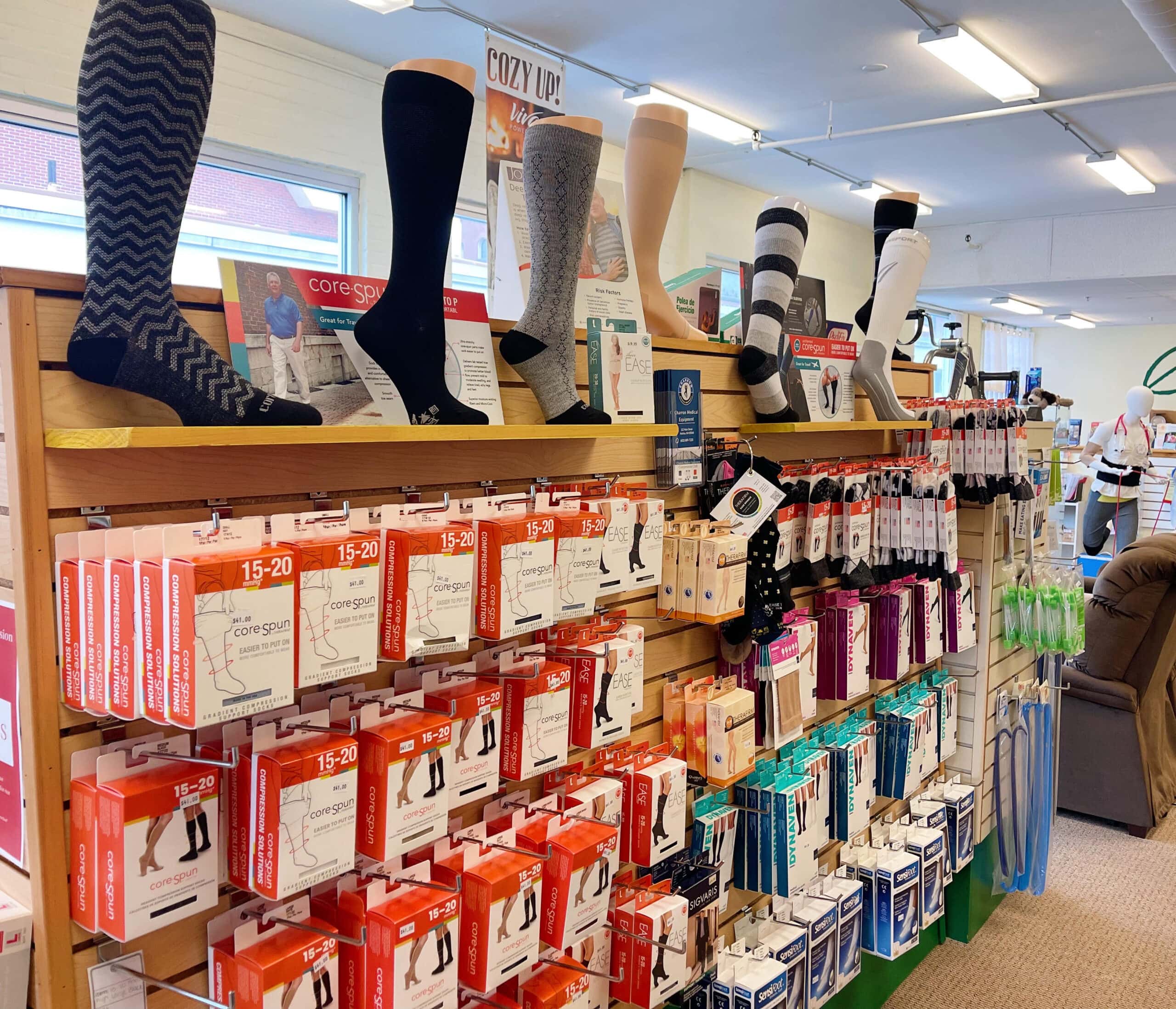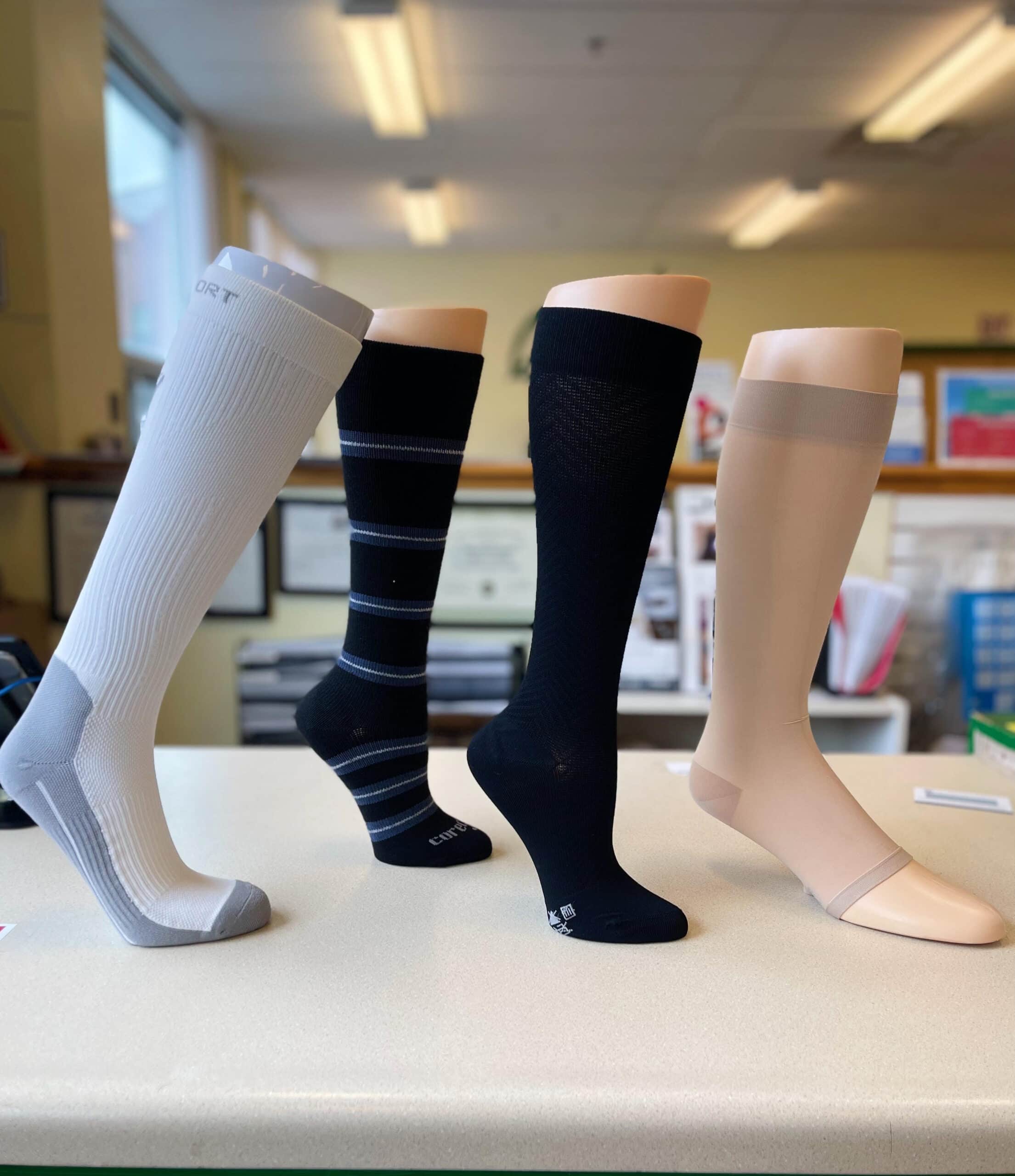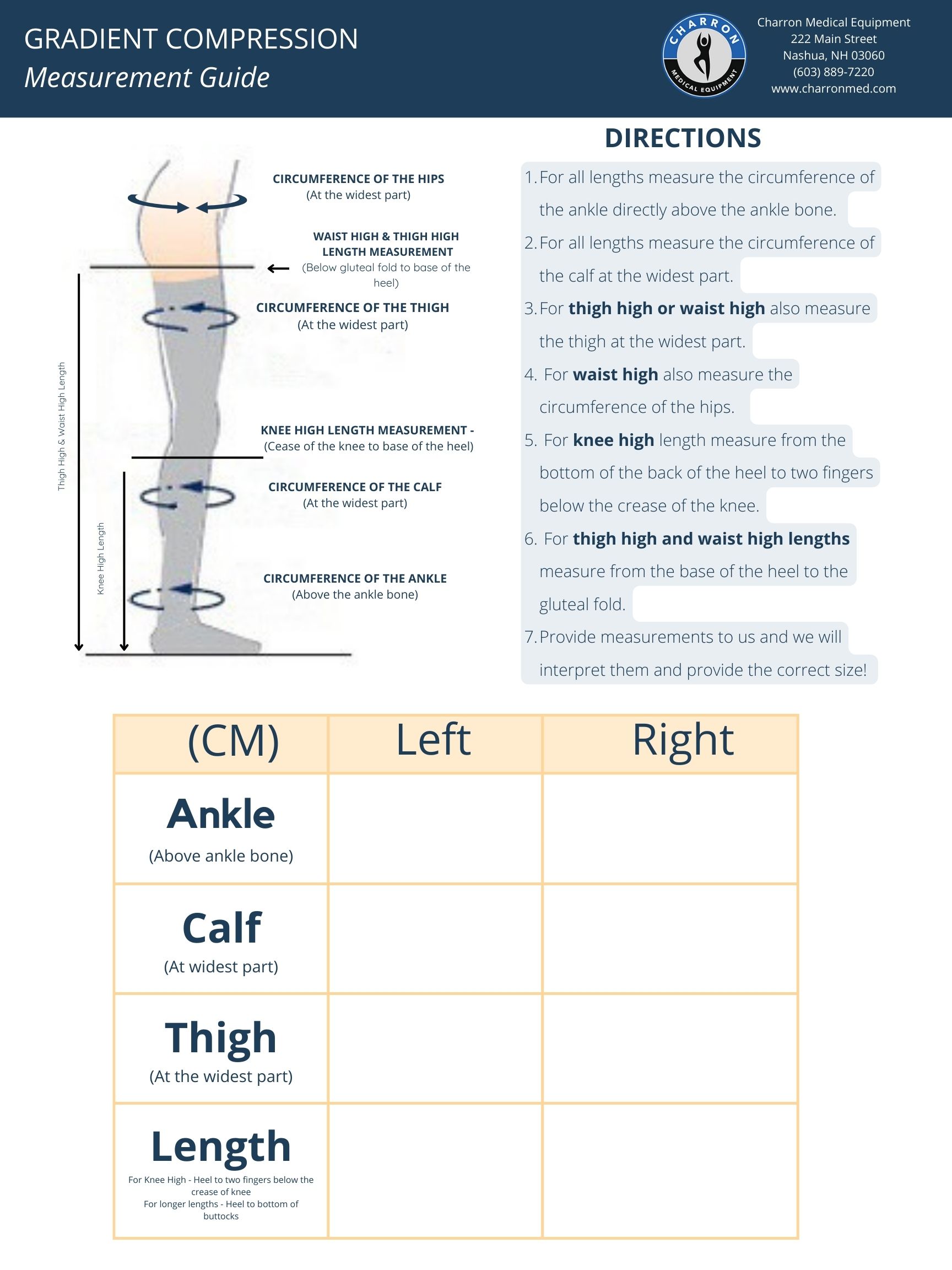

Compression Socks
We carry the top compression sock brands:
Jobst, Juzo, TheraFirm, Sigvaris and Medi
Join our compression club!
Wearing properly fitting compression socks is important.
Stop in to be measured and we will document your measurements and compression sock purchases for future visits. We will provide you with a membership card and you may receive discounts on your future purchases of compression socks and stockings!
For more information on the compression club give us a call or visit the store and speak with our associates!
Compression socks can seem complicated, let us make it easier!
*Some restrictions apply*
Compression socks must fit properly to be effective and with so many products, styles, fabrics and more, it can be hard to find the correct product for you.
At Charron Medical Equipment we measure you to get the correct fit and discuss your options with you!
If you are not able to come in or need to purchase compression socks for someone else, you can use this handy chart.
If you have any questions please call the store and we can walk you through the process of measuring for compression socks.
Our associates will interpret the measurements provided to determine which size and product would be best for each individual.
Types of Compression
There are two types of compression socks: Gradient & Anti-embolism.
Gradient Compression Socks
This type of compression is tightest at the ankle and the compression gradually decreases up the leg. It is best for patients who are active and walking.
- Compression, generally expressed in mmHg (millimeters of mercury).
- Worn by those who are ambulatory in most cases
- Assist the calf muscles to perform their pumping action more efficiently to return blood to the heart.
Anti-Embolism Compression Socks
Anti-embolism compression socks, also known as TED Stockings (short for ThromboEmbolism-Deterrent hose) are used by individuals on bed rest or patients that are immobile.
- Used to support the venous and lymphatic drainage of the leg in non-ambulatory patients.
- Anti-embolism stockings deliver a distributed amount of compression at the ankle and up the leg.
What Compression Is Right for Me?
Strengths & Common Conditions
- 8-15mmHg (Mild): Tired, aching legs. Minor ankle, leg and foot swelling.
- 18mmHg: For patients that are bed ridden or immobile.
- 15-20mmHg (Moderate): Minor varicosities. Minor ankle, leg and foot swelling. Minor varicosities during pregnancy. Postsclerotherapy.
- 20-30mmHg (Firm): Moderate to severe varicosities. Moderate edema. Moderate to severe varicosities pregnancy. Post sclerotherapy. Helps prevent recurrence of venous ulcerations. Superficial thrombophlebitis. Post surgical.
- 30-40mmHg (Extra Firm): Severe varicosities. Severe edema, Lymphatic edema. Chronic venous insufficiency. Post sclerotherapy. Helps prevent recurrence of venous ulcerations, manages active venous ulcerations. Orthostatic hypotension. Post surgical. DVT/post thrombotic syndrome.
- To watch a video on how to properly put on compression socks click the link below –> How to put on Compression.
Indications
- To help prevent formation of Deep Vein Thrombosis.
- To promote increased blood flow velocity in the legs by compression of the deep venous system.
Contraindications
***Stockings are not recommended for patients with the following:
- Any local leg condition in which stockings would interfere, such as: dermatitis, vein ligation (immediately postoperative),
- gangrene, or recent skin graft.
- Severe arteriosclerosis or other ischemic vascular disease.
- Massive edema of legs or pulmonary edema from congestive heart failure.
- Extreme deformity of leg.











